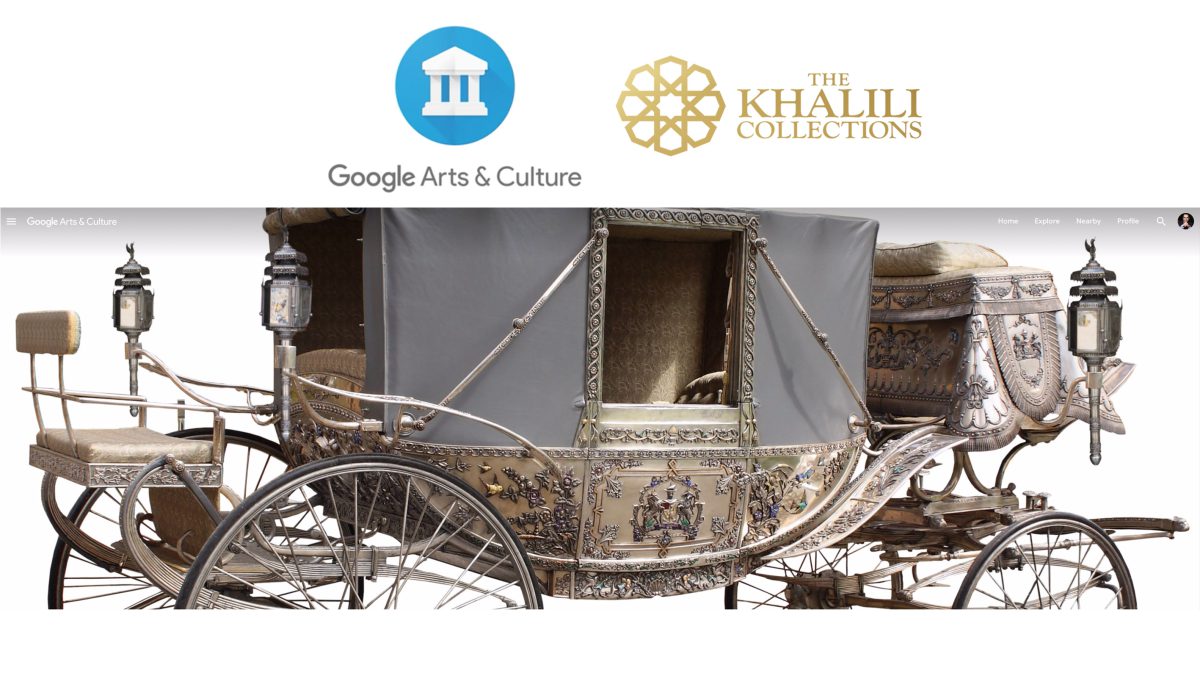


Google Arts & Culture has launched a historic partnership with the UK-based Khalili Collections – one of the greatest and most comprehensive private collections in the world.
Viewers will now be able to use Google Arts & Culture features – such as browsing for art by year, colour or geographical origin – to explore the highlights of the Khalili Collections such as 10 folios from the Shahnameh of Shah Tahmasp (c. 1520), 59 folios from the oldest manuscript of Rashid-al-Din’s world history (Jami al-tawarikh – 1314), an early 13th-century saddle from the era of Genghis Khan and an astrolabe commissioned by Shah Jahan (1648–58).
Some of the most intricately produced artworks, such as Japanese silk textiles from the Meiji period, have been digitised for the first time using Google’s gigapixel Art Camera technology, allowing for ultra high-resolution zoom to explore fine details such as intricate needlework and individual threads.
Special digital exhibits have been curated on the platform, through which the artworks are used to tell compelling visual stories. A Visual History of the Hajj takes viewers on a journey to the two holiest cities in Islam – Mecca and Madinah – and allows them to experience the 1,400-year cultural history of the world’s most phenomenal annual religious gathering. Japonisme Rediscovered explores the unique influence of Japanese Meiji art on European modern and contemporary art. Provincial Life under Artaxerxes and Alexander the Great provides a unique insight into a transformational period in world history by exploring 4th century BC Aramaic documents from ancient Bactria.
“The scale and diversity of the Khalili Collections place them among the most impressive,” said Lucy Schwartz, Program Manager – Head of UK Programs at Google Arts & Culture, “and we are very excited to help make these cultural treasures and the magnificent stories they tell available to millions of people worldwide”.
“A true collector has the social responsibility to fulfil five essential criteria: to collect, conserve, research, publish and exhibit the artworks.” said Professor Nasser D. Khalili, founder of the Khalili Collections. “Digitisation is the natural next step in our mission to enrich as many lives a possible with art. We are proud to be partnering with Google Cultural Institute, the global leaders in this area.”
The Collections plans to continue working with Google Arts & Culture to explore innovative ways in which technology can be harnessed to optimise the viewer experience of the Collections.
Google-3
About the Khalili Collections
Over the course of five decades, UNESCO Goodwill Ambassador Professor Nasser D. Khalili has assembled eight of the world’s finest art collections – each on its own merit being the largest and most comprehensive of its kind. They comprise:
Islamic Art (700-2000)
Hajj and the Arts of Pilgrimage (700-2000)
Aramaic Documents (535BC-324 BC)
Japanese Art of the Meiji Period (1868-1912)
Japanese Kimono (1700-2000)
Swedish Textiles (1700-1900)
Spanish Damascened Metalwork (1850-1900)
Enamels of the World from (1700-2000)
Together, the Eight Collections comprise some 35,000 magnificent works, many of which have been exhibited at prestigious museums and institutions worldwide. Each work of art in the Khalili Collections has been meticulously conserved, researched and published as part of what is considered to be one of the most ambitious art scholarship projects in modern history. Seventy-two of over a hundred planned volumes have already been published, edited by Professor Nasser D. Khalili and with contributions from the world’s leading experts in each respective field.
About Google Arts & Culture
Google Arts & Culture is a new, immersive way to experience art, history, culture and world wonders from over a thousand organizations worldwide. Google Arts & Culture has been created by the Google Cultural Institute and it is available for free for everyone on the web, on iOS and Android .
